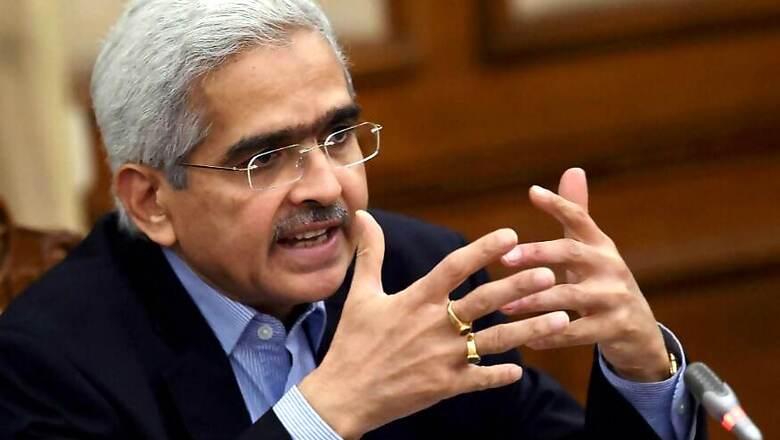
views
Mumbai: The Reserve Bank of India's change in monetary policy stance effectively equates to an additional 25-basis-point (bps) rate cut, Governor Shaktikanta Das was reported as saying.
The comments fuelled speculation over whether the central bank is nearing an end to its current rate-cutting cycle, after three moves so far this year.
Das also said future policy decisions will depend on incoming data, particularly inflation, in separate interviews with the Times of India and Bloomberg published on Monday.
“We have reduced policy rates by 75 bps and we have shifted to accommodative. And shifting of the stance to accommodative itself means a rate cut of 25 bps at least,” Das was quoted as saying in both the reports.
A senior trader with a primary dealership said: “It looks like he is saying don't expect more than a 25 bps cut,” adding that Das seemed more concerned about a lack of transmission of the RBI's rate cuts so far.
The benchmark 10-year bond yield rose as much as 9 bps to 6.45% after the comments.
While the RBI has cut rates by 75 bps since the start of 2019, banks have only eased their key lending rate by 15-20 bps.
"Given the role the RBI is assigned, inflation is primary target, and given due weightage to the fact that growth momentum has slowed down. For the revival, various stakeholders have to play the role," Das said.
The RBI's next monetary policy committee meeting decision will be announced on Aug. 7, and Indian markets are pricing in another quarter-point cut.
The government earlier in July reduced its fiscal deficit target to 3.3% from the 3.4% set in its interim budget in February and did little to provide any direct stimulus to any sector, putting the onus on the central bank to revive growth.
"I don’t think the fiscal space is really the answer. If you have fiscal space, any government can use. Long-term growth can be sustained by structural reforms, enhancing competitiveness, and focusing on an enabling business environment," Das said.
"The focus will have to be on continued ease of business and availability of credit at a reasonable price."
Bank Reforms
Das said the government's decision to recapitalise state-run banks with another 700 billion rupees ($10.14 billion) was a good step and privatisation of banks can be addressed later after seeing how the current measures play out.
"There are certain social and broader macro-economic responsibilities that public sector banks are fulfilling. Consolidation is one measure and a process has commenced," Das told the Times of India.
"We have to give this model time to play its role. Banks are undergoing a lot of reforms, in terms of imbibing new technology and business models," he added.
When asked about interest rate moves not being passed on by banks, Das said, "There is a case for banks to show better monetary policy transmission."
"We have to keep in mind that banks have gone through a period of crisis and they are just recovering..."
Shadow Banks
The non-banking finance companies (NBFCs) or so-called shadow banks in the country have been struggling with a significant liquidity crunch since the collapse of the Infrastructure Leasing and Financial Services last year.
Das reiterated that the RBI will constantly monitor the NBFCs and remain alert as the regulator and the monetary authority in the country.
"On NBFC, not a day passed in the last several months where we don't have a discussion or a review internally. Either on the sector or individual NBFCs," he said.
"We are in constant interaction with the banks and it's our endeavour to ensure a collapse of another NBFC, especially a large one, doesn’t happen."
Das also said there would be no special liquidity window for the shadow banks currently.
"We cannot lend money directly to one NBFC. Under the law, RBI is the lender of last resort, but we haven’t reached that situation where we invoke that particular legal provision," Das said.
"So the RBI in today's time cannot and would not be lending directly to NBFCs. We cannot give them clean money. It is up to the bank and depending on the collateral."



















Comments
0 comment